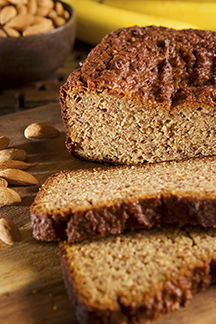Gluten-Free Labeling of Foods
An estimated 3 million people in the United States have celiac disease. In people with celiac disease, foods that contain gluten trigger production of antibodies that attack and damage the lining of the small intestine. Such damage limits the ability of people with celiac disease to absorb nutrients and puts them at risk of other very serious health problems, including nutritional deficiencies, osteoporosis, slow growth, infertility, miscarriages, and intestinal cancers.
On August 2, 2013, FDA issued a final rule defining “gluten-free” for food labeling, which is helping consumers, especially those living with celiac disease, be confident that items labeled “gluten-free” meet a defined standard for gluten content. “Gluten-free” is a voluntary claim that can be used by food manufacturers on food labels if they meet all the requirements of the regulations.
On August 12, 2020, the FDA issued a final rule on the gluten-free labeling of fermented or hydrolyzed foods. It covers foods such as yogurt, sauerkraut, pickles, cheese, green olives, FDA-regulated beers and wines (e.g., generally those with less than 7 percent alcohol), and hydrolyzed plant proteins used to improve flavor or texture in processed foods such as soups, sauces, and seasonings. The rule does not change the definition of “gluten-free” but establishes compliance requirements for these hydrolyzed and fermented foods. It also includes a discussion of how FDA will verify compliance for distilled foods such as vinegar.
- Federal Register Notice for Final Rule for Gluten-Free Labeling of Fermented or Hydrolyzed Foods
- Federal Register Notice for the Gluten-Free Labeling Final Rule
- Small Entity Compliance Guide: Gluten-Free Labeling of Foods
- Questions and Answers on the Gluten-Free Food Labeling Final Rule
- 'Gluten-Free' Means What It Says - People with celiac disease can now have confidence in the meaning of a “gluten free” label on foods.
- Gluten and Food Labeling
- Three Years Later, What is the Impact of the Gluten-Free Labeling Standard?
Additional Information
- Food Allergies
- FDA's Responses to Comments on the Report Titled Health Hazard Assessment for Gluten Exposure in Individuals with Celiac Disease
- Health Hazard Assessment for Gluten Exposure in Individuals with Celiac Disease
- External Peer Review of the FDA/CFSAN Draft Health Hazard Assessment for Gluten in Individuals with Celiac Disease: Determination of Tolerable Daily Intake Levels and Levels of Concern for Gluten

